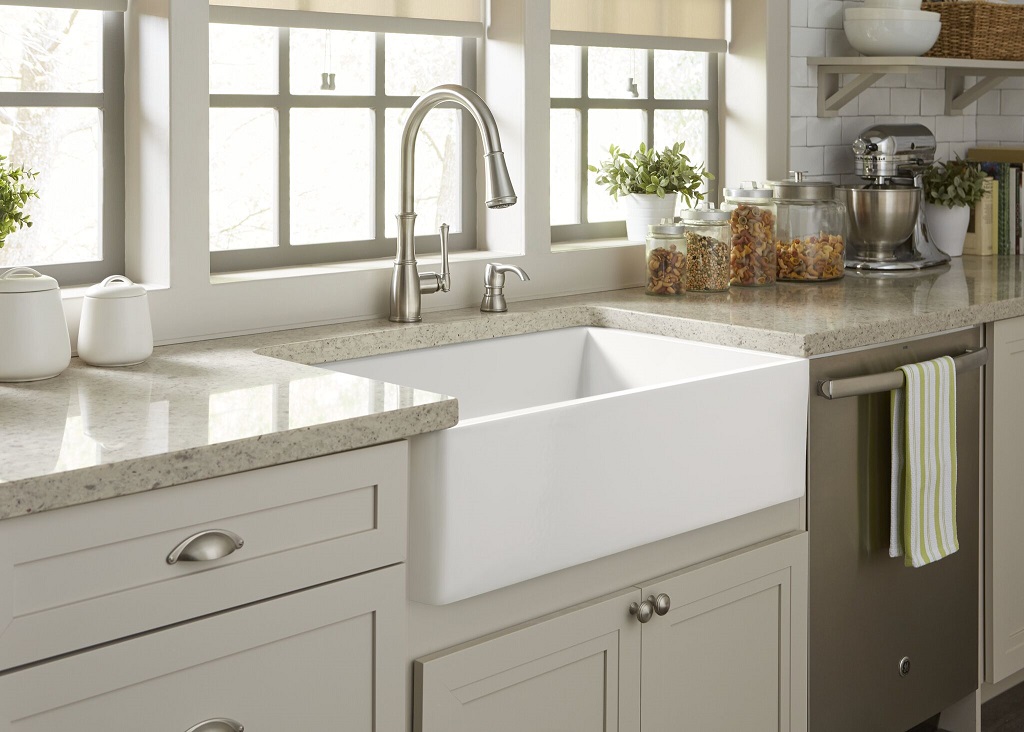The kitchen is an essential part of every home, serving as a place to prepare meals, enjoy family dinners, and even entertain friends. One of the main components of any functional kitchen is the sink. As a homeowner or kitchen designer, choosing the right sink is important as it can greatly impact your daily routine and ensure durability and reliability for years of usage. Among the many materials available to you, a granite sink can bring both functionality and aesthetic appeal. In this comprehensive guide, we will show you everything you need to know about choosing the right granite sink for your kitchen.
Understanding Granite Sinks
Granite sinks are made from natural granite stones and acrylic resins that offer an upscale, modern look to your kitchen. The combination of natural minerals and man-made materials creates a strong, non-porous composite material known as granite composite. This allows for better resistance to stains, scratches, and heat compared to traditional stainless steel, ceramic, or cast-iron sinks. Moreover, granite sinks come in a wide range of color, styles, and finishes that suit any kitchen design.
Types of Granite Sinks
When considering a granite sink for your kitchen, it’s essential to determine the ideal type that combines functionality and style. Here are the main types of granite sinks:
- Undermount Granite Sink: Undermount sinks are installed beneath the countertop, aiming for a seamless and clean countertop look. These sinks are perfect for showcasing the beauty of your granite sink and minimizing the visible seam.
- Granite Farmhouse Sink (Apron Front Sink): A granite farmhouse sink boasts a stylish apron front that showcases the sink’s material and adds a rustic touch to your kitchen. Perfect for traditional, modern farmhouse, or country-style kitchens.
- Drop-in (Top-mount) Granite Sink: This type of sink sits on top of your countertop, making it an ideal choice for easy installation and replacing existing sinks without major countertop alterations.
- Integrated Granite Sink: An integrated sink is a one-piece unit that incorporates the sink and countertop. This seamless design is perfect for a sleek, modern aesthetic and offers easy cleaning with no visible seams.
Pros and Cons of Granite Sinks
Before deciding on a granite sink for your kitchen, it’s essential to weigh the pros and cons associated with these sinks:
Pros:
- Durable and long-lasting
- Scratch, stain, and heat resistant
- Low maintenance
- Available in various colors, styles, and finishes
- Adds value to your home
Cons:
- Heavier than other materials, requiring additional reinforcement during installation
- Can be expensive compared to other materials
- Limited in shape options due to the weight of the material
- Dark-colored granite sinks may show water spots more easily
Factors to Consider when Choosing a Granite Sink
To ensure you select the right granite kitchen sink for your kitchen, consider these factors:
- Budget: Determine your budget as granite sinks can vary in price based on style, brand, and quality.
- Material Quality: Ensure you are purchasing a high-quality granite composite sink for better durability and resistance.
- Style and Design: The design, color, and finish should complement your kitchen décor and countertops. Choose a style that suits your personal taste and the overall kitchen design.
- Size and Installation: Consider the size of your sink and the available space in your kitchen. If you’re replacing an existing sink, measure your cutout dimensions to ensure a proper fit. Additionally, consult a professional installer for adequate support and installation.
How to Care and Maintain Your Granite Sink
Proper care and maintenance are key to ensuring your granite sink maintains its beauty and functionality. Follow these tips to keep your sink in top shape:
- Clean your granite sink regularly using a soft sponge or cloth, and non-abrasive mild detergent. Avoid using harsh chemicals or abrasive cleaning tools that can damage the sink’s surface.
- Remove any water spots by wiping down the sink with a soft cloth after each use, especially on darker-colored sinks.
- For stubborn stains, use a granite sink cleaner formulated specifically for your sink’s material. Follow the manufacturer’s instructions for proper usage.
- Regularly apply a granite sink sealer for added protection and maintaining the sink’s shine.
Conclusion
A granite sink can be a valuable addition to any kitchen, offering durability, beauty, and low maintenance. By understanding the different types of granite sinks, considering the pros and cons, and weighing essential factors, you will select the perfect granite sink for your kitchen. Proper care and maintenance will ensure your granite sink lasts for many years, making your kitchen just as beautiful and functional as ever.

